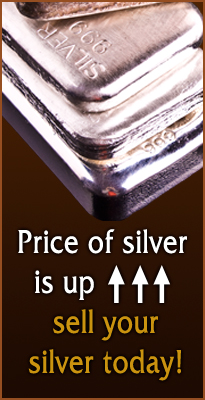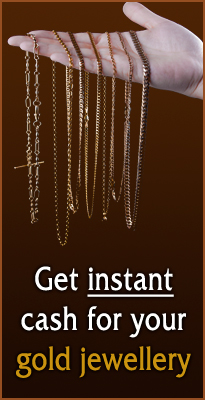A – B – C – D – E – F – G – H – I – J – K – L – M – N – O – P – Q – R – S – T – U – V – W – X – Y – Z
Digit
12-hour (24-hour) recorder (or register): A sub-dial on a chronograph (see chronograph) that can time periods of up to 12 or 24 hours.
30-minute recorder (or register): A sub-dial on a chronograph (see “chronograph”) that can time periods of up to 30 minutes.
A
alarm: The watch alerts you with beeps at pre-set time(s).
analog: A watch that shows the time using hour and minute hands.
analog – digital display: A watch that shows the time by means of hour and minute hands (analog display) as well as by numbers (a digital display).
aperture: Small opening. The dials of some watches (in French: montres à guichet) have apertures in which certain indications are given (e.g. the date, the hour, etc).
applique: Applique or applied chapters are numerals or symbols cut out of a sheet metal and stuck or riveted to a dial.
assembling: Process of fitting together the components of a movement. This was formerly done entirely by hand, but the operations have now been largely automated. Nevertheless, the human element is still primordial, especially for inspection and testing.
assortiment: French term for the parts used for making an escapement.
automatic watch: A watch whose mainspring is wound by the movements or accelerations of the wearer’s arm. On the basis of the principle of terrestrial attraction, a rotor turns and transmits its energy to the spring by means of an appropriate mechanism. The system was invented in Switzerland by Abraham-Louis Perrelet in the 18th century.
automatic winding: This term refers to a watch with a mechanical movement (as opposed to a quartz or electrical movement). The watch is wound by the motion of the wearer’s arm rather than through turning the winding stem. A rotor that turns in response to motion winds the watch’s mainspring. If an automatic watch is not worn for a day or two, it will wind down and need to be wound by hand to get it started again.
B
balance: Moving part, usually circular, oscillating about its axis of rotation. The hairspring coupled to it makes it swing to and fro, dividing time into exactly equal parts. Each of the to-and-fro movements of the balance (“tick-tack”) is called an “oscillation”. One oscillation is composed of two vibrations.
battery EOL: Battery End Of Life indicator. This function forewarns of impending battery failure in a quartz watch by means of the second hand jumping in two or sometimes four-second intervals. The wearer usually has approximately two weeks before battery failure.
barrel: Thin cylindrical box containing the mainspring of a watch. The toothed rim of the barrel drives the train.
bezel: The ring that surrounds the watch dial (or face). The bezel is usually made of gold, gold plate or stainless steel.
bidirectional rotating bezel: A bezel that can be rotated either clockwise or counterclockwise. These are used for mathematical calculations such as average speed or distance (see “slide rule”) or for keeping track of elapsed time(see “elapsed time rotating bezel”).
blacksteel: A DLC (diamond-like carbon) Coating used on a few of Breitling’s limited edition models. It is an extremely hard surface coating that gives the watch a black appearance. For more information, see wikipedia’s definiation of DLC.
bridge: Complementary part fixed to the main plate to form the frame of a watch movement. The other parts are mounted inside the frame.
built-in illumination: Lighting on a watch dial that allows the wearer to read the time in the dark.
C
calendar: A feature that shows the date, and often the day of the week. There are several types of calendar watches. Most calendar watches show the information digitally through an aperture on the watch face. Some chronograph watches show the information on sub-dials on the watch face.
caliber/calibre: Same as Movement.
cambered: Often used in referring to a curved or arched dial or bezel.
(Watch-) case: Container that protects the watch-movement from dust, damp and shocks. It also gives the watch as attractive an appearance as possible, subject to fashion and the taste of the public.
chapter ring: An outer ring around a watch dial that contains some sort of unit measurement of time such as minute increments. A chapter ring can be attached to the dial separately or painted directly on the dial.
chronograph: Watch or other apparatus with two independent time systems: one indicates the time of day, and the other measures (stopwatch function) brief intervals of time. Counters registering seconds, minutes and even hours can be started and stopped as desired. It is therefore possible to measure the exact duration of an event. There are many variations on the chronograph. Some operate with a center seconds hand which keeps time on the watch’s main dial. Others use sub-dials to time elapsed hours, minutes and seconds. Still others show elapsed time on a digital display on the watch face. Some chronographs can be used as a lap timer (see “flyback hand” and “split seconds hand”). The accuracy of the stopwatch function will commonly vary from 1/5th second to 1/100th second depending on the chronograph. Some chronographs will measure elapsed time up to 24 hours. Watches that include the chronograph function are themselves called “chronographs.” When a chronograph is used in conjunction with specialized scales on the watch face it can perform many different functions, such as determining speed or distance (see “tachometer”). Do not confuse the term “chronograph” with “chronometer.” The latter refers to a timepiece, which may or may not have a chronograph function, that has met certain high standards of accuracy set by an official watch institute in Switzerland.
chronometer: Technically speaking, all watches are chronometers. But for a Swiss made watch to be called a chronometer, it must meet certain very high standards set by the Swiss Official Chronometer Control (C.O.S.C.). If you have a Swiss watch labeled as a chronometer, you can be certain that it has a mechanical movement of the very highest quality– undergone a series of precision tests in an official institute. The requirements are very severe: a few seconds per day in the most unfavourable temperature conditions (for mechanical watches) and positions that are ordinarily encountered.
complications: Complications are additional features or mechnical additions to a watch over the standard time and date. For example, a chronograph is a common complication, as well as a day/date or big date. More exclusive complications include minute repeater, tourbillon and retrograde hands.
C.O.S.C.: Control Officile Suisse de Chronometers or Swiss Controle Officiel des Cronometres- the independent Swiss regulatory organization that rigorously tests and certifies (or fails) watch movements for chronometer status.
countdown timer: A function that lets the wearer keep track of how much of a pre-set period of time has elapsed. Some countdown timers sound a warning signal a few seconds before the time runs out. These are useful in events such all kinds of race.
Côtes de Genève: A form of decoration in higher grade watch movements which look like stripes on the movement plates. These used to be applied by hand; in many cases in modern times, they are very simply applied by machine. Also called Geneva Stripes.
crown: Also called a stem or pin, a crown is the knob/button on the outside of the watch case that is used to set the time and date. In a mechanical watch the crown also winds the mainspring. In this case it is also called a “winding stem”. A screw in (or screw down) crown is used to make a watch more water resistant. The crown actually screws into the case, dramatically increasing the water-tightness of the watch.
crystal: The transparent cover on a watch face made of glass crystal, synthetic sapphire or plastic. Better watches often have a sapphire crystal which is highly resistant to scratching or shattering.
D
day/date: A watch that indicates not only the date but also the day of the week.
depth alarm: An alarm on a divers’ watch that sounds when the wearer exceeds a pre-set depth.
dead-beat seconds: A complication on a mechanical watch where the second hand does not sweep, but jumps forward in one second intervals, much like a quartz watch.
depth sensor/depth meter: A device on a divers’ watch that determines the wearer’s depth by measuring water pressure. It shows the depth either by analog hands and a scale on the watch face or through a digital display.
deployant buckle (Foldover): A three-folding enclosure that secures the two ends of the bracelet and allows enough room for placing the watch on the wrist when fully deployed. When closed, the buckle covers the two-piece folding mechanism.
dial: The watch face (plate of metal or other material). Dials vary verymuch in shape, decoration, material, etc. The indications are given by means of numerals, divisions or symbols of various types.
digital watch: A watch that shows the time through digits rather than through a dial and hands (analog) display.
direct-drive: Refers to a seconds-hand that moves forwards in little jerks.
display: Indication of time or other data, either by means of hands moving over a dial (analogue display) or by means of numerals appearing in one or more windows (digital or numerical display); these numerals may be completed by alphabetical indications (alphanumerical display) or by signs of any other kind. Example: 12.05 MO 12.3 = 12 hours, 5 minutes, Monday 12th March. Such displays can be obtained by mechanicalor electronic means.
diving watch: A watch that is water resistant to 200M. Has a one way rotating bezel and a screw-on crown and back. Has a metal or rubber strap (not leather). Has a sapphire crystal and possibly, a wet-suit extension.
E
ebauche: A base watch movement. Often, manufacturers will make custom modifications to the base movement to add complications (features), decorate the movement, and electroplate or upgrade certain parts for added durability.
elapsed time rotating bezel: A graduated rotating bezel (see “rotating bezel”) used to keep track of elapsed time. The bezel can be turned so the wearer can align the zero on the bezel with the watch’s seconds or minutes hand. After a period of time passes, you can read the elapsed time off the bezel. This saves you having to perform the subtraction that would be necessary if you used the watch’s regular dial.
escapement: Device in a mechanical movement that controls the rotation of the wheels and thus the motion of the hands. Set of parts (escape wheel, lever, roller) which converts the rotary motion of the train into to-and-fro motion (the balance).
F
factory (works): In the Swiss watch industry, the term manufacture is used of a factory in which watches are manufactured almost completely, as distinct from an “atelier de terminage”, which is concerned only with assembling, timing, fitting the hands and casing.
flyback hand: A seconds hand on a chronograph that can be used to time laps or to determine finishing times for several competitors in a race. Start the chronograph, putting both the flyback hand and the regular chronograph seconds hand in motion. To record a lap time or finishing time, stop the flyback hand. After recording the time, push a button and the hand will “fly back” to catch up with the constantly moving elapsed-time hand. Repeat the process to record as many lap times or finishing times as needed. In chronographs with numerical display, a “function” having the same effect.
full ling: A Breitling watch that has a minimum lug width of 24mm and a diameter of at least 46mm and is accompanied by a metal bracelet, not a strap. This diameter applies to round Breitlings. Examples of full lings: Super Avenger, Bentley Motors, Navitimer World.
G
gear train: The system of gears which transmits power from the mainspring to the escapement.
geneva stripes: A form of decoration in higher grade watch movements which look like stripes on the movement plates. These used to be applied by hand; in many cases in modern times, they are very simply applied by machine.
glass (Crystal): Thin plate of glass or transparent synthetic material, for protecting the dials of watches, clocks, etc.
GMT: GMT (Greenwich Mean Time), also known as Zulu Time, as set to the international clock in Greenwich, England, reflects, through an additional hour hand, the world time on a 24-hour scale and is used by pilots worldwide.
gold plated: A layer of gold electroplated to a base metal.
guilloché: A style of intricate engraving that is popular on watch dials, usually very thin lines interwoven to create a surface texture.
H
hack/hacking: Describes the feature of a movement whereby the seconds hand can be stopped for exact setting of the time. Usually done by pulling the crown out to its outermost position.
hand: Indicator, usually made of a thin, light piece of metal, very variable in form, which moves over a graduated dial or scale. Watches usually have three hands showing the hours, minutes and seconds.
horology: The science of time measurement, including the art of designing and constructing timepieces.
I
incabloc: Incabloc is a trade name for a type of shock absorbing device/spring used to protect the delicate parts of the mechanical watch escapement. Mentioned here as it is probably the most widely used and some watch manufacturers used to draw attention to it by referring to it on the watch dial itself.
integrated bracelet: A watch bracelet that is incorporated into the design of the case.
J
jewels: Synthetic sapphires or rubies that act as bearings for gears in a mechanical watch. The jewels reduce friction to make the watch more accurate and longer lasting. Generally made of synthetic material, except for the precious or semi-precious stones (ruby, sapphire, garnet) which are sometimes used in “de luxe” watches.
jump hour: A jump hour indicator takes the place of an hour hand. It shows the hour by means of a numeral in a window on the dial of the watch. The word “jump” refers to the fact that the numerals jump from 1 to 2 to 3, etc., rather than showing intermediate times between hours as hour hands do. The minutes and seconds in a jump hour watch are read as normal from the analog hands and dial. An example of this type of watch is the Breitling for Bentley Flying B.
K
kelek: Kelek was established in 1896 & now owned by Breitling. Their was changed to Breitling Chronometrie in 2002. The company decorates and modifies all of Breitling’s base movements for them as well as developing in-house modules. After their purchase we may see much more innovative horological additions to watches from Breitling.
kif: Another brand of shock absorbing device similar to Incabloc. Kif is probably the next most common shock absorber on the market.
kinetic: Refers to the Seiko line of Kinetic watches. This innovative technology has a quartz movement that does not use a battery. Movement of your wrist charges a very efficient capacitor which powers the quartz movement. Once the capacitor is fully charged, mens models will store energy for 7-14 days without being worn. Ladies models store energy for 3-7 days. Of course, if the watch is worn every day the capacitor is continually recharged. The watch alerts you to a low capacitor charge when the seconds hand starts to move in two second intervals.
L
lap timer: A chronograph function that lets the wearer time segments of a race. At the end of a lap, he stops the timer, which then returns to zero to begin timing the next lap.
liquid-crystal display (LCD): A digital watch display that shows the time electronically by means of a liquid held in a thin layer between two transparent plates. All LCD watches have quartz movements.
lugs: Projections on a watch face to which the watch band or bracelet is attached.
lug width: Distance between the lugs which determines the size of strap or bracelet that the watch requires.
M
main plate: Base plate on which all the other parts of a watch movement are mounted.
mainspring: The driving spring of a watch or clock, contained in the barrel.
manual-wind: is pretty much self explanatory – it refers to a watch movement that you have to manually wind it every day or two to keep it running. This is the oldest method of powering a watch. While much less common today, manual-wind watches are still available from a number of finer watch manufacturers.
manufacture: Short for “manufacture d’horologie”, this is a French horological term that is typically used to describe a company that fabricates all or most parts of the wristwatch and movement in-house rather than outsourcing.
marine chronometer: Highly accurate mechanical or electronic timekeeper enclosed in a box (hence the term box chronometer), used for determining the longitude on board ship. Marine chronometers with mechanical movements are mounted on gimbals so that they remain in the horizontal position is necessary for their precision.
measurement conversion: A feature, usually consisting of a graduated scale on the watch’s bezel, that lets the wearer translate one type of measurement into another-miles into kilometers, for instance, or pounds into kilograms.
mechanical movement: A movement powered by a mainspring, working in conjunction with a balance wheel. Most watches today have electronically controlled quartz movements and are powered by a battery. However, mechanical watches are currently enjoying a resurgence in popularity.
mineral crystal: Watch crystal made from what is essentially a form of glass. More scratch resistant than acrylic, a mineral crystal will however scratch and is extremely difficult to polish.
minute repeater: A Complication on a watch that can strike the time in hours, quarters, or seconds by means of a push piece.
movement: The inner mechanism of a watch that keeps time and moves the watch’s hands, calendar, etc. Movements are either mechanical or quartz.
moon phase: An indicator that keeps track of the phases of the moon. A regular rotation of the moon is once around the earth every 29 days, 12 hours and 44 minutes. Once set, the moon phase indicator accurately displays the phase of the moon.
P
power reserve: see reserve de marche
perpetual calendar: A calendar complication that adjusts automatically to account for different lengths of the month (30 or 31 days) and leap years. Perpetual calendars, which can be powered by quartz or mechanical movements, are programmed to be accurate until the year 2100.
Q
quartz movement: A movement powered by a quartz crystal to. Quartz crystals are very accurate. They can be mass produced which makes them less expensive than most mechanical movements which require a higher degree craftsmanship.
R
reserve de marche: A feature that shows when the mainspring in the watch will need to be wound. This is a complication for mechanical watches that is quite useful and is usually indicated in hours, except in the case of watches that have a very high power reserve numbering in the days.
rehaut: The flange or projection around the inner edge of the watch that typically holds the watch crystal up and reinforces it. The rehaut is typically referred to mostly on Rolex watches as they are inscribed for anti-counterfeiting measures. On most Breitling watches the rehaut is covered by an applied chapter ring.
rider tabs: The four tabs located on the bezels of many of watches from Breitling such as the Chronomat Evolution and the SuperOcean. They are located on the 3, 6, 9 and 12 o’clock positions.
rotating bezel: A bezel (the ring surrounding the watch face) that can be turned. Different types of rotating bezels perform different timekeeping and mathematical functions.
rotor: The part of an automatic (or self-winding) mechanical watch that winds the movement’s mainspring. It is a flat piece of metal, usually shaped like a semicircle, that swivels on a pivot with the motion of the wearer’s arm.
retrograde: Used to describe a pointer hand on a watch dial (often a subdial), which returns to zero at the end of a prescribed period. For example a watch may have retrograde date – in this case the hand moves up a scale a day at a time, pointing to the current date – when it reaches 31 it will spring back to 1.
repeater: A device that chimes the time when the wearer pushes a button. Some repeaters, called “quarter repeaters” sound just the hours and the quarter hours ( by means of two different pitched tones); others called “five minute repeaters”, sound the hours, quarters, and five minute periods after the quarter; and still others called “minute repeaters”, sound the hours, quarters and minutes.
rattrapante chronograph: The addition of a flyback hand (rattrapante) significantly increases the potential uses for chronographs. It makes possible the measurement of split second times or timing simultaneous events of unequal duration.
S
sapphire crystal: A crystal made of synthetic sapphire, a transparent, shatter-resistant, scratch-resistant substance.
screw-lock crown: A crown that can be screwed into the case to make the watch watertight.
second: Basic unit of time (abbr. s or sec), corresponding to one 86,000th part of the mean solar day, i.e. the duration of rotation, about its own axis, of an ideal Earth describing a circle round the Sun in one year, at a constant speed and in the plane of the Equator. After the Second World War, atomic clocks became so accurate that they could demonstrate the infinitesimal irregularities (a few hundreths of a second per year) of the Earth’s rotation about its own axis. It was then decided to redefine the reference standard; this was done by the 13th General Conference on Weights and Measures in 1967, in the following terms: “The second is the duration of 9,192,631,770 periods of the radiation corresponding to the transition between the two hyperfine levels of the fundamental state of the atom of caesium 133”. Conventionally, the second is subdivised into tenths, hundredths, thousendths (milliseconds), millionths (microseconds), thousand-millionths (nanoseconds) and billionths (picoseconds).
second time-zone indicator: An additional dial that can be set to the time in another time zone. It lets the wearer keep track of local time and the time in another country simultaneously.
shock resistance: As defined by U.S. government regulation, a watch’s ability to withstand an impact equal to that of being dropped onto a wood floor from a height of 3 feet.
skeleton watch: A watch in which the case and various parts of the movement are of transparent material, enabling the main parts of the watch to be seen.
slide rule: A device, consisting of logarithmic or other scales on the outer edge of the watch face, that can be used to do mathematical calculations. One of the scales is marked on a rotating bezel, which can be slid against the stationary scale to make the calculations. Some watches have slide rules that allow specific calculations, such as for fuel consumption by an airplane or fuel weight.
solar powered: A watch that uses solar energy (from any light source) to power the quartz movement.
stepping motor: The part of a quartz movement that moves the gear train, which in turn moves the watch’s hands.
stopwatch: A watch with a seconds hand that measures intervals of time. When a stopwatch is incorporated into a standard watch, both the stopwatch function and the timepiece are referred to as a chronograph.
Strap: A watch band made of cloth, rubber, leather or other non-metal material.
sub-dial: A small dial on a watch face used for any of several purposes, such as keeping track of elapsed minutes or hours on a chronograph or indicating the date.
T
tachometer: (aka. “Tachymeter”) A feature found on some chronograph watches, measures the speed at which the wearer has traveled over a measured distance. In watchmaking, a timer or chronograph with a graduated dial on which speed can be read off in kilometres per hour or some other unit (see “timer”).
tank watch: A rectangular watch designed by Louis Cartier. The bars along the sides of the watch were inspired by the tracks of tanks used in World War 1.
telemeter: A telemeter determines the distance of an object from the observer by measuring how long it takes sound to travel that distance. Like a tachometer (see “tachometer”), it consists of a stopwatch, or chronograph, and a special scale, usually on the outermost edge of the watch face.
timer: Instrument used for registering intervals of time (durations, brief times), without any indication of the time of day.
titanium: A metal that is used for some watch cases and bracelets. Titanium is much stronger and lighter than stainless steel. Titanium is also hypo-allergenic.
tonneau watch: A watch shaped like a barrel, with two convex sides.
totalizer: A mechanism that keeps track of elapsed time and displays it, usually on a subdial on the watch dial. Same as a “recorder” or “register”. The term “totalizer” can be used more generally to refer to any counter on a watch.
tourbillon: A special complication found on only a few very high end mechanical watches that compensates for the effect of gravity. This eliminates the small variation in watch movement performance based on the position of the watch (face up, face down, on side, etc.).
U
unidirectional rotating bezel: An elapsed time rotating bezel (see “elapsed time rotating bezel”), often found on divers’ watches, that moves only in a counterclockwise direction. It is designed to prevent a diver who has unwittingly knocked the bezel off its original position from overestimating his remaining air supply. Because the bezel moves in only one direction, the diver can err only on the side of safety when timing his dive. Many divers’ watches are ratcheted, so that they lock into place for greater safety.
UTC: Universal Time Coordinated. A universal time based on the Greenwich Meridian used by the military and in aviation. Greenwich Mean Time (GMT) can be considered approximately equivalent to Universal Time Coordinated (UTC). GMT as such is now obsolete however, being replaced by UTC. Using this timezone/standard avoids errors and problems associated with different time zones and summer times operational in different countries.
V
vibration: Movement of a pendulum or other oscillating element, limited by two consecutive extreme positions. The balance of a mechanical watch generally makes five or six vibrations per second (i.e. 18,000 or 21,600 per hour), but that of a high-frequency watch may make seven, eight or even ten vibrations per second (i.e. 25,200, 28,800 or 36, 000 per hour).
vph (vibrations per hour): Movement of a pendulum or other oscillating element, limited by two consecutive extreme positions. The balance of a mechanical watch generally makes five or six vibrations per second (i.e. 18,000 or 21,600 per hour), but that of a high-frequency watch may make seven, eight or even ten vibrations per second (i.e. 25,200, 28,800 or 36, 000 per hour).
W
watch winder: A powered device that rotates an automatic watch to keep it wound and running when not on a person’s wrist. A watch winder is a device used to keep automatic (also known as self winding) watches running when not worn. Automatic watches operate on the principle of winding themselves using a moving weight inside the watch. The weight swings or rotates while the watch is worn and turns the winding mechanism inside the watch. So, fairly obviously, if the watch is not worn, then it no longer receives power this way and will run down. While virtually all automatic watches can be manually wound, this is not always convenient. So the concept of an automatic watch winder was born.
A watch winder is a device which holds a watch (or often more than one) and moves it in a circular patterns to emulate the necessary parts of human motion to operate the self-winding mechanism.
A winder cannot over wind an automatic watch, since all automatic watches are protected from being over wound by a mechanism that disengages the winding process when the mainspring is fully wound. But using a timer-based winder is still very important to prevent excessive wear on the winding mechanism. There is no need to keep the watch in motion 24 hours a day when usually only 30 minutes of motion is necessary to keep it properly wound.
Winders are totally useless with battery-operated quartz watches. But they do work for the special ‘battery-less’ quartz watches, such as the Omega-Matic, Seiko Kinetic, and similar. These automatic/quartz hybrids use the same weight/rotor principal to generate electric power to run a quartz movement.
Waterproof: A term no longer used because it incorrectly implied a more complete resistance to water entry than such watches were actually capable of. See Water Resistant.
water resistant: The ability to withstand splashes of water. Terms such as “water resistant to 50 meters” or “water resistant to 200 meters” indicate that the watch can be worn underwater to various depths.
winding stem: The button on the right side of the watch case used to wind the mainspring. Also called a “crown.”
world time dial: A dial, usually on the outer edge of the watch face, that tells the time in up to 24 time zones around the world. The time zones are represented by the names of cities printed on the bezel or dial. The wearer reads the hour in a particular time zone by looking at the scale next to the city that the hour hand is pointing to. The minutes are read as normal. Watches with this feature are called “world timers.




















